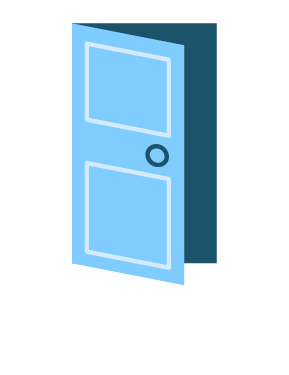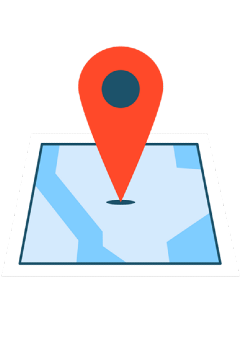Who is eligible
Visual artists, curators, art critics and art observers who wish to deepen their professional practices and expand their networks are eligible to apply for a working period in the Netherlands or another country at one of the recognized residencies offered by the Mondriaan Fund.
The Mondriaan Fund offers Residency grants to stimulate the enrichment of the artistic development and practice of visual artists, curators and art observers abroad or in a new environment, through a period at a Dutch or international studio designated by the Fund. This also allows for the exploration of new Dutch and international contacts and markets, supporting the creation of work that can make a valuable contribution to contemporary visual art and/or cultural heritage in the Netherlands.
What it covers
The grant is intended for travel, accommodation and material costs. The costs of living space, working space and the support that residents receive are paid directly to the residency by the Mondriaan Fund.
How much
Grant amounts vary depending on the location and duration of the residency. Please check the possibilities below.
When and where to apply
The deadline for this round Residency is 26 September 2024, before 16:00 PM (CEST) / 10:00 AM (AST).
You must first request an account on the Mondriaan Fund website, which you need to submit any grant application. Keep in mind that following the deadline date, a 3 month period is required for processing the applications. No grants are awarded retrospectively.
See the residencies that we offer below. An artist or curator/art observer may apply for 2 residencies during an application round. For each residency, a separate application form and PDF attachments must be submitted. Indicate on the form which residency you prefer.
This explanation is based on the Mondriaan Fund Residency Grant regulations.
Terms and conditions
For visual artists
- You must have been working as a professional visual artist for at least one year and be registered as such with the Kamer van Koophandel; or
- you have studied for at least three years at a recognized art school and have been working as a professional visual artist for at least one year; or
- you have been working as a professional visual artist for three years or more.
- You are artistically active in the visual arts and in that capacity embedded in the professional visual arts practice in the Netherlands and/or the Caribbean part of the Kingdom.
- At the moment you submit your application, you are not receiving other financial support from the Mondriaan Fund that covers the same costs.
- The resident is expected to contribute 10%. The Mondriaan Fund has automatically included this in its contribution. You do not have to do anything.
- Mondriaan Fund grants may not be used for or during study. You may not use a Mondriaan Fund grant at the same time that you are following a bachelor, master, graduate, postgraduate or postdoctoral programme at, for example, the Rijksakademie, BAK, de Ateliers, de Jan van Eyck Academie or EKWC).
- An artist may apply for 2 residencies during an application round. For each residency, a separate application form and PDF attachments must be submitted. Indicate on the form which residency you prefer.
For curators and art observers
- You must have been working for at least one year as a curator or art observer in the field of visual arts or cultural heritage, and be able to demonstrate this with publications, exhibitions, research projects or projects you have initiated.
- You are artistically active in the visual arts and/or cultural heritage and in that capacity you are embedded in the professional visual arts and/or cultural heritage practice in the Netherlands and/or the Caribbean part of the Kingdom.
- At the moment of your application, you are receiving no other financial support from the Mondriaan Fund that covers the same costs.
- The resident is expected to contribute 10%, this is settled by the Mondriaan Fund.
- You may not apply for a Residency Grant while you are studying in the Netherlands or another country.
- You may not use a Mondriaan Fund grant to pay for study. Mondriaan Fund grants may not be used at the same time that you are enrolled in any bachelor, master, graduate, postgraduate or postdoctoral programme.
- A curator/art observer may apply for two residencies during an application round. For each residency, a separate application form and PDF attachments must be submitted. Indicate on the form which residency you prefer.
Some residencies can only be applied for by visual artists or only by curators / observers, others by both. At the bottom of this page, you can read specific information about the characteristics of each residency, the conditions, the workperiod, etc
Assessing the applications
Submitted applications and associated PDF documents are first checked by Mondriaan Fund staff to ensure they are complete. They are then presented to a committee that advises onawarding Residency Grants. In assessing your application, the advisory committee follows an intital elimination procedure:
- If the majority if the committee give a negative assessment of the artistic performance, a negative advisory is given.
- In the second round of voting, the committee assesses the artistic performance and other criteria mentioned above. If the majority of the committee give a negative assessment, a negative advisory is given.
A Mondriaan Fund Residency Grant can only be awarded if the committee gives a positive advisory. It is unfortunately not possible to award grants to all applications that receive positive advisories, hence the advisory committee prioritises the positive advisories following the final round of voting. A meeting between the management of the particular residency and the proposed candidate may also be part of the selection procedure. If the applications fail to produce a suitable candidate, the advisory committee can propose candidates themselves.
A Residency grant can only be awarded if the committee gives a positive advisory. Because not all positively assessed applications can always be granted, the advisory committee ranks the positive results on the basis of the criteria listed below. In the prioritisation, it may play a role if the applicant has previously received a contribution for a residency. In that case, the decision on the quality of the oeuvre/practice and the plan/motivation will weigh more heavily when prioritising. An interview with the management of the residency and nominated candidates may be part of the selection procedure. If no candidates can be selected from the applications, the advisory committee can nominate candidates itself.
The advisory committee assesses your application on the basis of:
- Visual documentation.
- Curriculum vitae.
- Explanation of your work and your artistic and substantive starting points.
- A plan, including a motivation of why you wish to attend the specific residency.
The advisory committee assesses both the quality and the development of your work, as well as the qualities of your plan and how it connects with the institution or programme where you wish to work out and execute your plan.
The advisory committee takes the following criteria into consideration:
The quality and development of your oeuvre/practice*
- Do you have a distinctive artistic vision and is this convincingly conveyed in previous work or activities, or does the committee recognise sufficient initiative in this regard?
- Does the oeuvre/professional practice exhibit quality?
For artists: consider e.g. the significance of the oeuvre, the inherent imaginative strength, the command of the selected mediums and/or techniques and the work’s power of expression.
For observers: consider e.g. professionalism and skill, the ownership or autonomy of the curatorial activities, the selection of artists/artworks, the reflection on the selected themes. - Is there development appropriate to the phase of the professional practice?
The quality of your cultural entrepreneurship*
- Are you actively focused on developing your practice, entering into collaborations, entering into the public eye and finding an audience for your work/activities?
In the case that the advisory committee positively assesses the above criteria, the committee will also assess:
The quality of the plan, the motivation for the residency and your approach to finding an audience for your work
- Are the plan and motivation for the residency convincing and sufficiently suited to the location, facilities and (local) context of the residency?
- Does the residency offer added value for the development of your practice and network?
- Is it sufficiently apparent that your work and/or work process will be presented to the relevant people and/or a relevant audience? Consider e.g. an exhibition, website, blog, open studio or workshop.
* The background and context of the professional practice will be taken into consideration during the assessment, e.g. schooling, cultural context and the nature and duration of the professional practice.
Whether or not the applicant has received a grant for a residency in the past may play a role regarding prioritisation.
Checklist
In order to process your application, the Mondriaan Fund requires the information listed below, some of which can be filled in on the application form, as well as PDF documents that you upload with your application. Here below is a checklist that follows the same chronology as the application form.
Tip: collect all the information before you begin filling in the online application form. All your attachments should be uploaded in PDF format. Where a maximum number of pages is indicated, do not exceed that number.
Checklist for artists
Explanation of work (max. 3 pages)
Outline the artistic/substantive vision of your work, how you express this in your work or activities, and the selected mediums and/or techniques. State what you do to develop your professional practice, such as entering into collaborations, entering into the public eye and finding an audience for your work. Wherever collaboration is involved, explain your part in that collaboration.
CV (max 3. pages)
Upload your CV with the most important information about your entire artist practice, with an emphasis on the last 1 to 4 years, depending on when you began. Consider exhibitions (indicate whether they were solo or group exhibitions), sales and publications, acquisitions, commissions, grants or awards, and the associated years . Also list related activities, such as teaching and advisory positions.
Plan (max. 4 pages)
Describe your substantive motivation for attending this residency and describe your artistic plan. Outline how your motivation and plan are in keeping with the location, facilities and context of the residency. Describe how the residency represents added value for the development of your practice and network. Also describe how you intend to reach a suitable audience and link that audience to the project or the work you will complete during the working period. This can, for example, take the form of a blog or information posted on your website, or include an exhibition, open studio or workshops during the residency period.
Visual documentation
Compile a PDF document with no more than 20 images of your most important works from the last one to four years. Begin with the most recent work. It may also help to include a few images of the work as it appeared in presentations, such as an exhibition. Always include photographs of individual works. For those who create films, performances and/or installations, you can also upload sound, video or film fragments totaling up to 15 minutes (all together no more than 300MB).
Upload a separate list of your documentation, also in PDF format, corresponding to the chronology of your visual (or other) documentation. Include a description or caption for each image and/or sound or video fragment, for example: 01, title, 2021, loop 2 min. Click here for the technical specifications.
Please note: do not use hyperlinks in the PDF with (visual) documentation material and in the documentation list. We cannot accept hyperlinks (to web pages for example) because the supplied image material may not be adjusted during the processing of the application.
Please note: The (visual) documentation material is a mandatory part of your application. If you don’t upload any documentation material, your application cannot be processed.
Where applicable:
Proof of residency in the Netherlands: Personal Records Database registration
If you do not have Dutch citizenship, you need to upload a recent copy (no more than 1 year old) of your registration with the Personal Records Database (uittreksel basisregistratiepersonen) of the municipality where you live. It shows that you reside in the Netherlands.
Banking information and Chamber of Commerce registration
We need your bank account number in order to transfer funds if your application is approved. If your current bank account number is known to the Mondriaan Fund, you do not need to provide any more information.
- If your bank account number has been changed or is new to the Mondriaan Fund, upload a recent bank statement that clearly shows the account holder’s name and IBAN.
- Do you have a business bank account for your one-person business? If so, also upload a recent copy of your registration with the Chamber of Commerce (uittreksel Kamer van Koophandel), no more than three months old. That confirms that your business bankaccount number is for your one-person business.
Diploma, art school deregistration, Chamber of Commerce registration
Have you been working as a professional visual artist for less than 3 years? If so, we need a copy of your diploma or degree from an institute for higher arts education, or a declaration from that institute confirming the date when you stopped being a student there. If you have not followed an art school education, you can instead include a recent copy of your registration with the Dutch Kamer van Koophandel or a non-Dutch Chamber of Commerce, no more than three months old. That will confirm that you are registered as a visual artist.
Checklist for curators and art observers
Explanation of work (max. 3 pages)
Outline the artistic/substantive vision of your work, how you express this in your work or activities, and the selected mediums and/or techniques. State what you do to develop your professional practice, such as entering into collaborations, entering into the public eye and finding an audience for your work. Wherever collaboration is involved, explain your part in that collaboration.
CV (max. 3 pages)
Upload your CV with the most important information about your entire professional practice, with an emphasis on the last 1 to 4 years, depending on when you began. Mention relevant articles and publications, research, exhibitions, manifestations, lectures, commissions, grants and prizes. Also mention related activities, such as teaching positions, advisory and committee positions.
Plan (max. 4 pages)
Describe your substantive motivation for attending this residency and describe your artistic plan. Outline how your motivation and plan are in keeping with the location, facilities and context of the residency. Describe how the residency represents added value for the development of your practice and network. Also describe how you intend to reach a suitable audience and link that audience to the project or the work you will complete during the working period. This can, for example, take the form of a blog or information posted on your website, or include an exhibition, open studio or workshops during the residency period.
Visual documentation
Your application will also be assessed on the basis of visual documentation, with the emphasis on the last one to four years. Compile a PDF document with a selection of no more than six of your most relevant and topical articles and/or no more than 10 images of recent exhibitions, events or other activities. You may also upload video or film fragments of projects you have realized (totaling no more than 15 minutes).
The visual material must be uploaded separately after you have submitted your application form. Together, they must not be more than 300 MB. You are also requested to upload a separate documentation list that corresponds with the visual material. When you submit your application form, you will immediately receive a confirmation e-mail with a link to a page where you can upload your documentation material. Click here for the technical specifications.
Please note: do not use hyperlinks in the PDF with (visual) documentation material and in the documentation list. We cannot accept hyperlinks (to web pages for example) because the supplied image material may not be adjusted during the processing of the application.
Please note: The (visual) documentation material is a mandatory part of your application. If you don’t upload any documentation material, your application cannot be processed.
Where applicable:
Proof of residency in the Netherlands: Personal Records Database registration
If you do not have Dutch citizenship, you need to upload a recent copy (no more than 1 year old) of your registration with the Personal Records Database (uittreksel basisregistratiepersonen) of the municipality where you live. It shows that you reside in the Netherlands.
Banking information and Chamber of Commerce registration
We need your bank account number in order to transfer funds if your application is approved. If your current bank account number is known to the Mondriaan Fund, you do not need to provide any more information.
- If your bank account number has been changed or is new to the Mondriaan Fund, upload a recent bank statement that clearly shows the account holder’s name and IBAN.
- Do you have a business bank account for your one-person business? If so, also upload a recent copy of your registration with the Chamber of Commerce (uittreksel Kamer van Koophandel), no more than three months old. That confirms that your business bankaccount number is for your one-person business.
Diploma, art school deregistration, Chamber of Commerce registration
Have you been working as a professional visual artist for less than 3 years? If so, we need a copy of your diploma or degree from an institute for higher arts education, or a declaration from that institute confirming the date when you stopped being a student there. If you have not followed an art school education, you can instead include a recent copy of your registration with the Dutch Kamer van Koophandel or a non-Dutch Chamber of Commerce, no more than three months old. That will confirm that you are registered as a visual artist.
Before submitting an application, do not forget to read the conditions, assessment, checklist and application procedure above!
Where
See the residencies that we offer below. An artist or curator/art observer may apply for 2 residencies during an application round. For each residency, a separate application form and PDF attachments must be submitted. Indicate on the form which residency you prefer.






